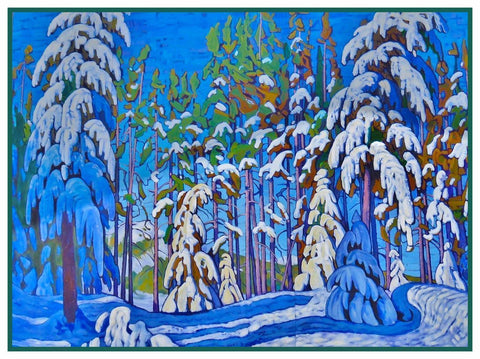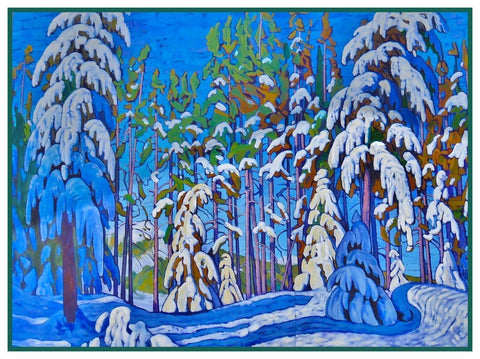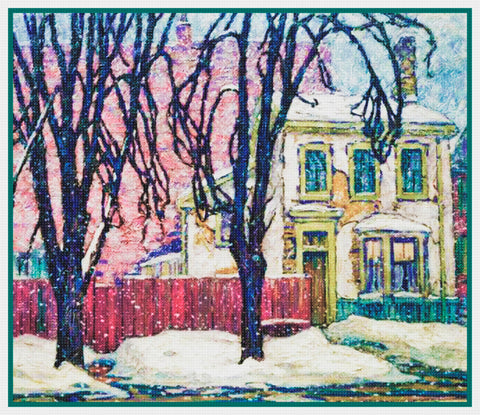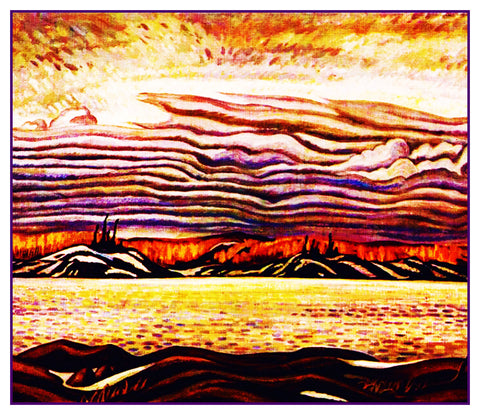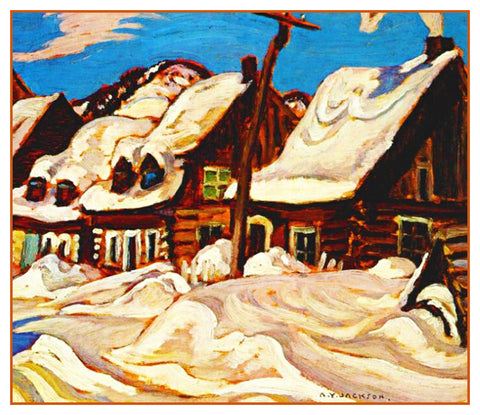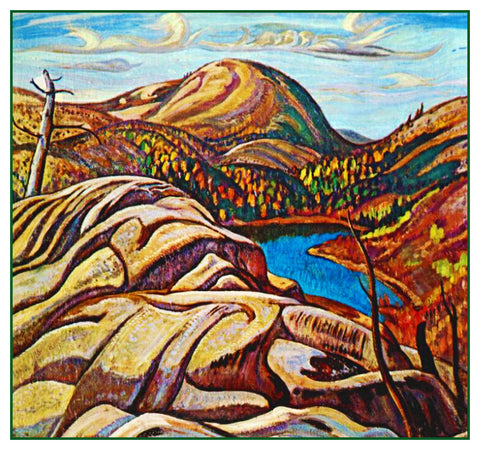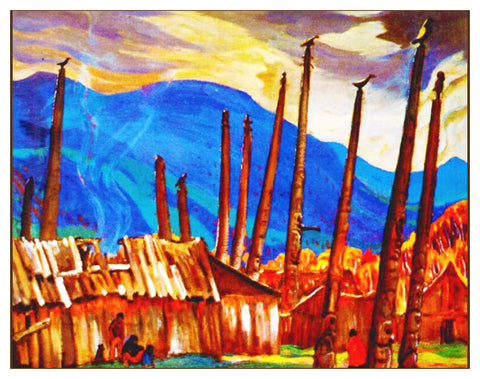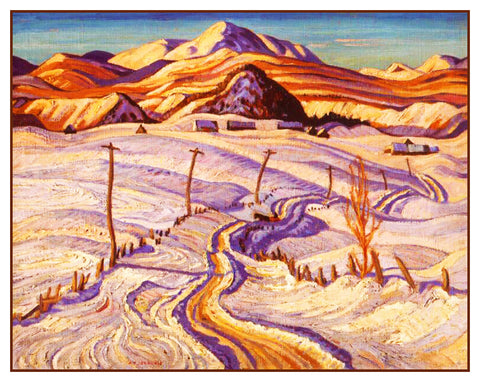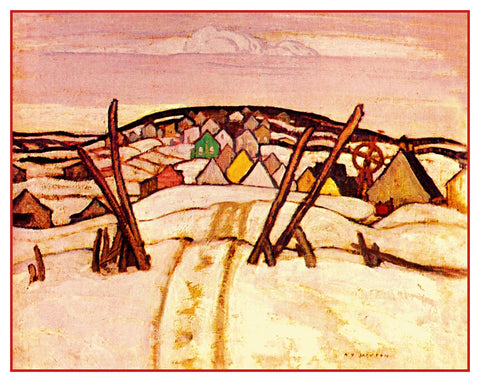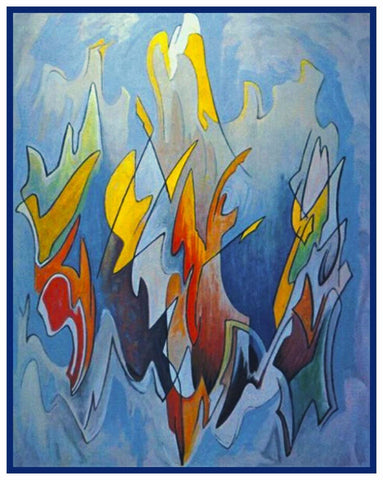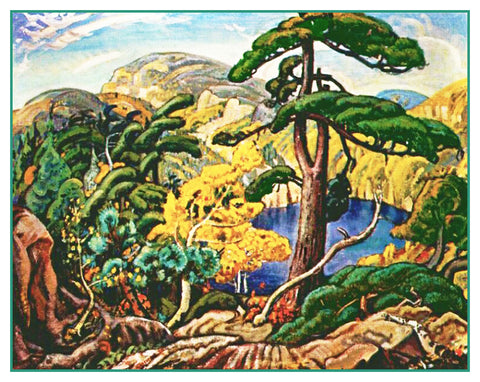- Orenco Originals creates exceptional charts/patterns. NO thread or fabric are included.
- COUNTED CROSS STITCH PATTERNCharted for 14 count fabric and DMC Cotton Floss. Finished size is 11 inches (154 Stitches) by 14 inches (196 Stitches).
- Chart/Patterns use up to 40 colors of floss. Full stitches only. No half stitches and no backstitching necessary.
- We provide two charts both printed in black ink on bright white 11" by 17" paper. Chart #1 is a single page chart. Chart #2 (tired eyes) is a 4 page enlarged chart that eases eye strain.This is a pattern that is used to sew and to create a counted cross stitch picture.This is NOT a completed product. It is NOT a kit, it contains no floss or fabric.
Believing that a distinct Canadian art could be developed through direct contact with nature, the Group of Seven is best known for its paintings inspired by the Canadian landscape, and initiated the first major Canadian national art movement. The Group of Seven, also known as the Algonquin School, was a group of Canadian landscape painters from 1920 to 1933, originally consisting of Franklin Carmichael (1890-1945), Lawren Harris (1885-1970), A. Y. Jackson (1882-1974), Frank Johnston (1888-1949), Arthur Lismer (1885-1969), J. E. H. MacDonald (1873-1932), and Frederick Varley (1881-1969). Later, A. J. Casson (1898-1992) was invited to join in 1926; Edwin Holgate (1892-1977) became a member in 1930; and LeMoine FitzGerald (1890-1956) joined in 1932.Two artists commonly associated with the group are Tom Thomson (1877-1917) and Emily Carr (1871-1945). Although he died before its official Patternion, Thomson had a significant influence on the group. In his essay "The Story of the Group of Seven", Harris wrote that Thomson was "a part of the movement before we pinned a label on it"; Thomson's paintings "The West Wind" and "The Jack Pine" are two of the group's most iconic pieces. Emily Carr was also closely associated with the Group of Seven, though was never an official member.


![[product_title] - Orenco Originals LLC Counted Cross Stitch](http://www.orencooriginals.net/cdn/shop/products/362213247908-0_1024x1024.jpg?v=1599024569)
![[product_title] - Orenco Originals LLC Counted Cross Stitch](http://www.orencooriginals.net/cdn/shop/products/362213247908-0_medium.jpg?v=1599024569)
![[product_title] - Orenco Originals LLC Counted Cross Stitch](http://www.orencooriginals.net/cdn/shop/products/362213247908-1_medium.jpg?v=1599024570)
![[product_title] - Orenco Originals LLC Counted Cross Stitch](http://www.orencooriginals.net/cdn/shop/products/362213247908-2_medium.jpg?v=1599024570)
![[product_title] - Orenco Originals LLC Counted Cross Stitch](http://www.orencooriginals.net/cdn/shop/products/ChartExample_-_Copy_-_Copy_-_Copy_2_-_Copy_-_Copy_1b713eaa-7d48-40d7-82c1-f43b8ab99401_medium.jpg?v=1599024570)
![[product_title] - Orenco Originals LLC Counted Cross Stitch](http://www.orencooriginals.net/cdn/shop/products/StitchitGeneral_1_ef35fec4-a3ae-4133-b05e-caee1f828321_medium.jpg?v=1599024570)
![[product_title] - Orenco Originals LLC Counted Cross Stitch](http://www.orencooriginals.net/cdn/shop/products/StitchitGeneral_2_c7d29dd5-c8c3-43a2-96cc-3ea92ce3ffe3_medium.jpg?v=1599024570)
